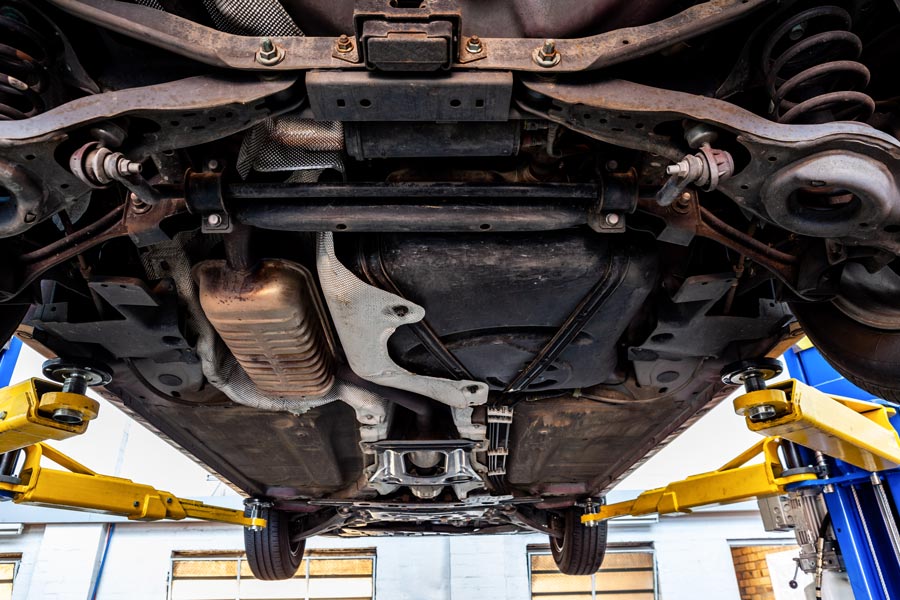How Do You Know If Your Car Frame Is Bent

A bent car frame, also known as the unibody or chassis, is a serious problem that can significantly compromise your vehicle's safety, handling, and overall value. Identifying a bent frame early can save you from costly repairs down the line, or even prevent a potential accident. This article provides a comprehensive guide on how to identify a bent car frame, covering visual inspections, driving tests, and professional diagnostic methods.
Visual Inspection: First Signs of Damage
The first step in detecting a bent frame is a thorough visual inspection. Look for the following telltale signs:
- Uneven Panel Gaps: Check the spaces between body panels like doors, hood, trunk, and fenders. Inconsistent gaps, where one side is wider than the other, are a strong indicator of frame misalignment.
- Misaligned Body Panels: Are your doors or hood difficult to close or latch properly? Do they appear to be sitting crooked relative to the surrounding bodywork? This could point to a frame issue affecting the mounting points.
- Wrinkled or Creased Metal: Examine the areas around the wheels wells, bumpers, and door sills. Wrinkled or creased metal, especially in the undercarriage, suggests significant impact and potential frame damage.
- Damaged or Missing Underbody Components: Inspect the exhaust system, suspension components, and fuel lines. Are any of these components damaged, bent, or unusually close to the ground? This could be because the frame supporting them is distorted.
- Rust and Corrosion Patterns: While rust isn’t always indicative of a bent frame, unusual rust patterns can signal stressed areas within the frame. Look for rust forming along seams or bends, particularly in areas that have been previously repaired.
Real-World Example: Imagine you're buying a used car and notice that the driver's side door requires excessive force to close, and the gap between the door and the rear quarter panel is significantly wider than the gap on the passenger side. This should raise a red flag and prompt further investigation of the frame's integrity.
Driving Tests: How Does It Feel?
A bent frame can drastically alter your car's handling characteristics. Perform these driving tests in a safe, controlled environment:
- Tracking Issues: On a flat, straight road, release the steering wheel briefly. Does the car drift to one side? This tracking issue suggests the wheels are not properly aligned, possibly due to a bent frame.
- Uneven Tire Wear: Examine your tires for uneven wear patterns. Excessive wear on the inside or outside edges of the tires can indicate misalignment caused by frame damage. A mechanic can perform a wheel alignment to check this more accurately.
- Steering Problems: Does the steering wheel vibrate excessively, feel loose, or require more effort to turn than usual? These symptoms could stem from a compromised frame affecting the steering geometry.
- Unusual Noises: Listen for squeaking, rattling, or clunking sounds, especially when going over bumps or turning. These noises could indicate that suspension components are rubbing against the frame due to misalignment.
Note: Tracking issues and uneven tire wear can also be caused by other factors such as worn suspension components or improper wheel alignment. It is vital to rule out these possibilities before concluding that the frame is bent.
Professional Diagnosis: When to Call the Experts
If you suspect your car's frame is bent based on the visual inspection and driving tests, it's crucial to seek professional diagnosis. Here's what professionals can do:
- Frame Measurement Systems: Auto body shops use sophisticated frame measurement systems, often laser-based, to precisely measure the frame's dimensions and compare them to factory specifications. This is the most accurate way to determine the extent of frame damage.
- Visual Inspection with Specialized Tools: Technicians can use specialized tools and techniques to identify subtle frame distortions that are not readily visible to the untrained eye.
- Vehicle History Report: A vehicle history report can reveal if the car has been involved in any accidents that might have caused frame damage.
Warning: Attempting to repair a bent frame yourself without the proper tools and expertise can be dangerous and could further compromise the vehicle's safety. Always entrust frame repairs to qualified professionals with specialized equipment.
Conclusion: Prioritizing Safety
Detecting a bent car frame requires a combination of careful observation, driving tests, and professional assessment. Don't ignore any warning signs, as a compromised frame can jeopardize your safety and the safety of others on the road. If you suspect frame damage, consult with a qualified mechanic or auto body shop for a thorough inspection and appropriate repairs. Addressing frame issues promptly will help maintain your vehicle's structural integrity, handling performance, and overall value.
